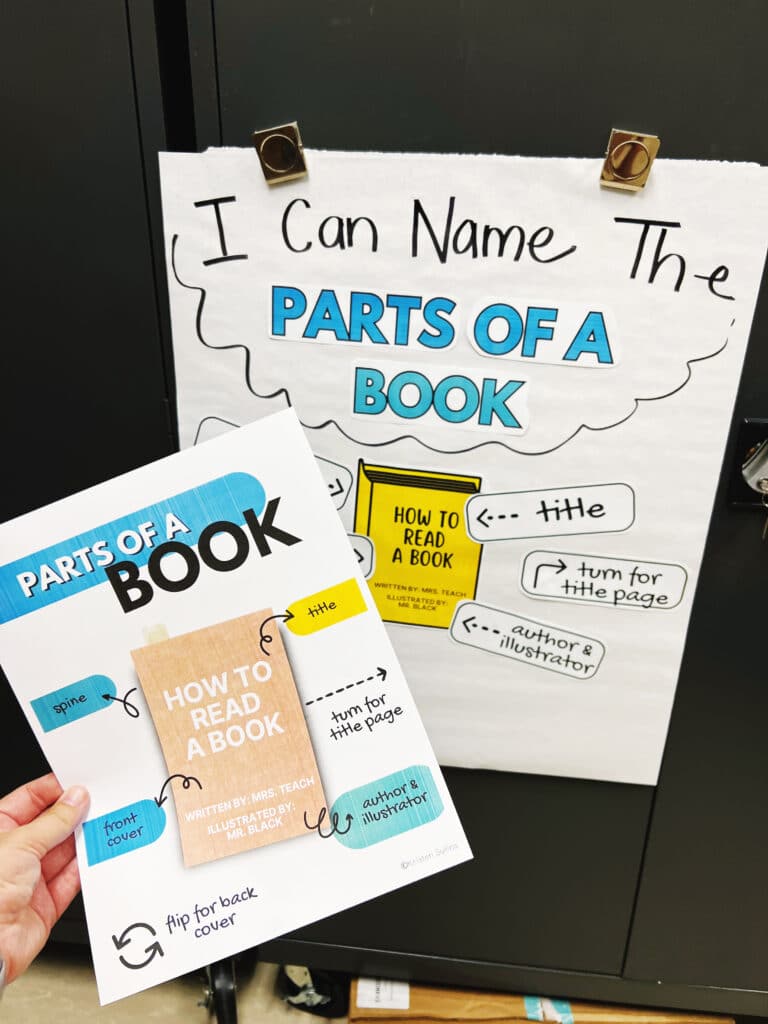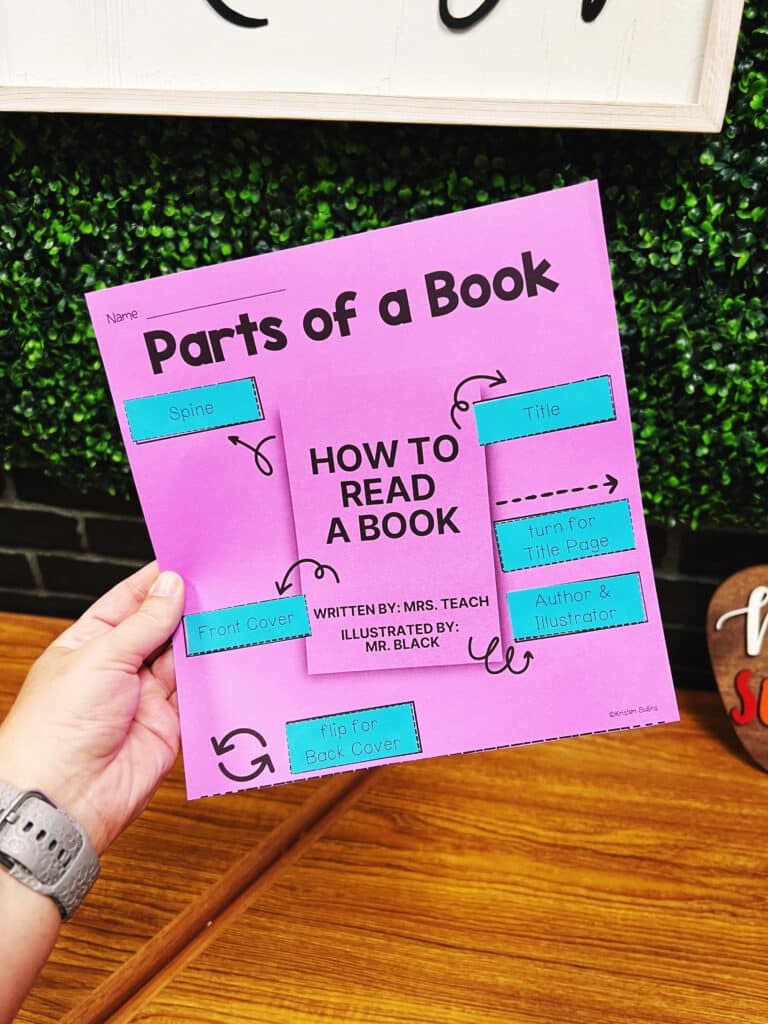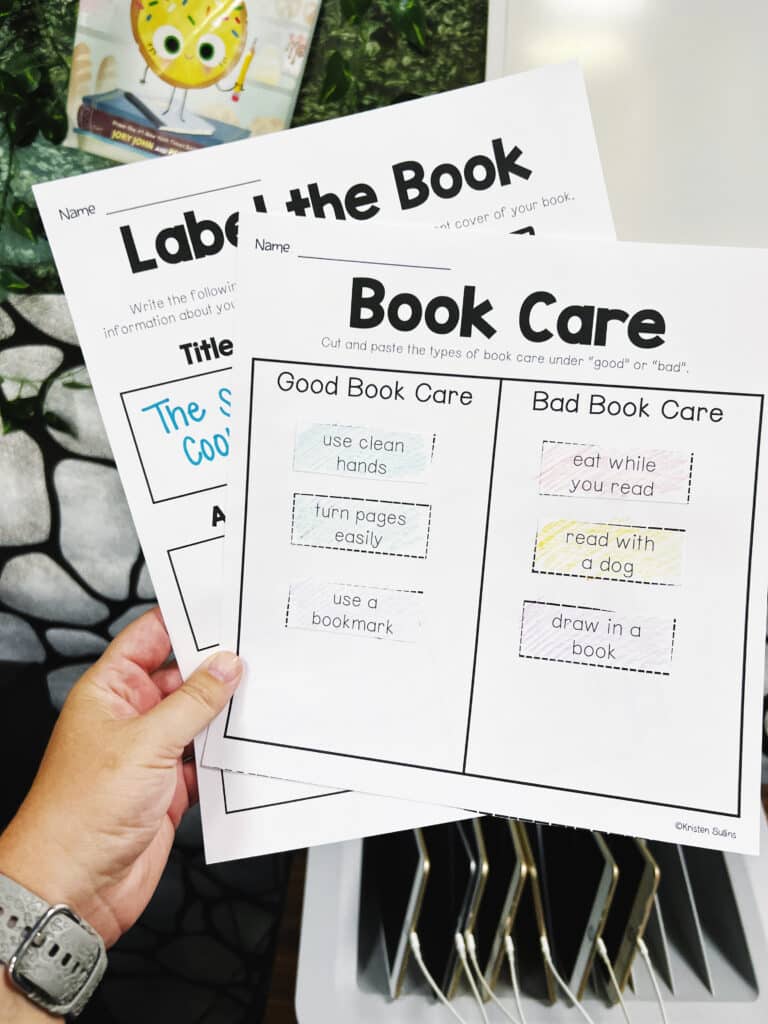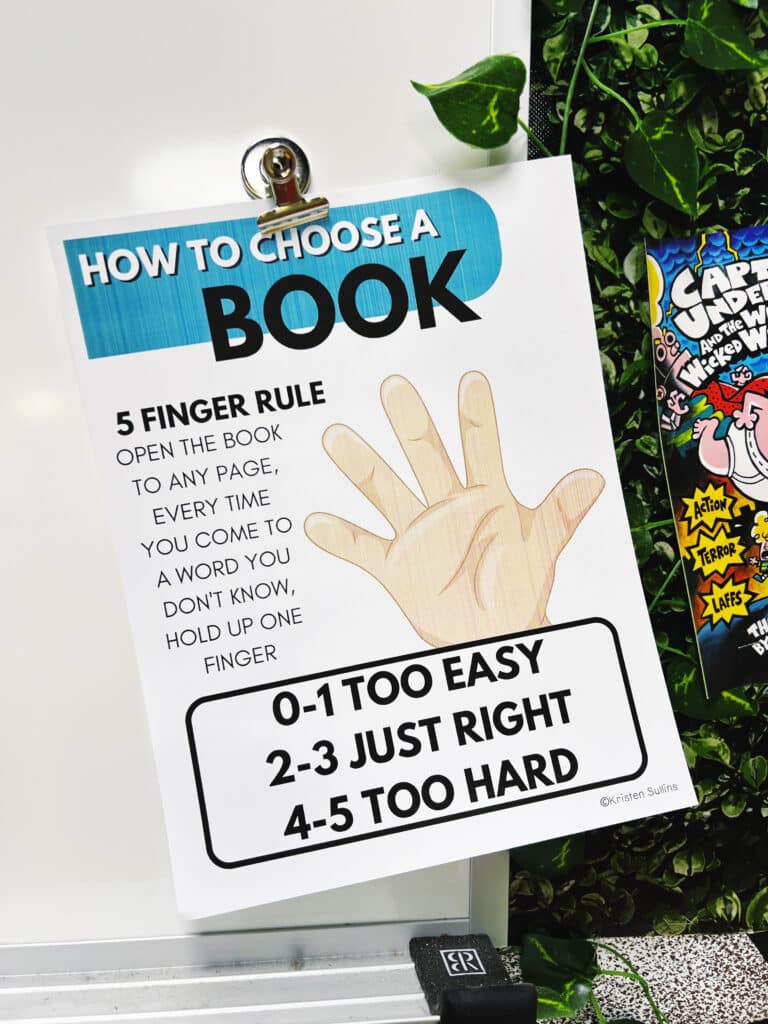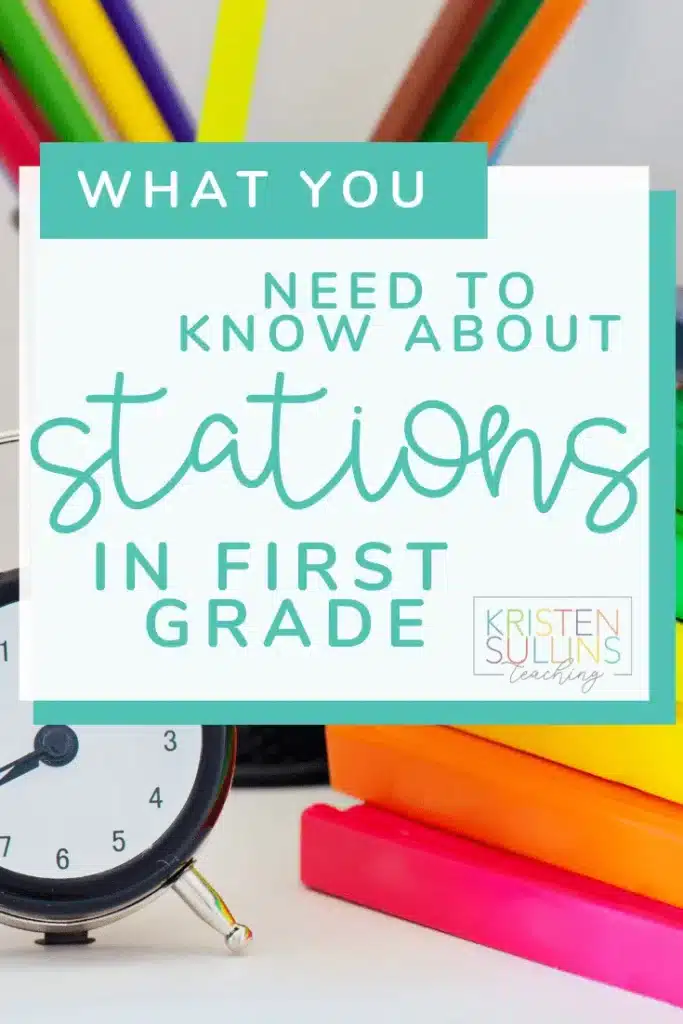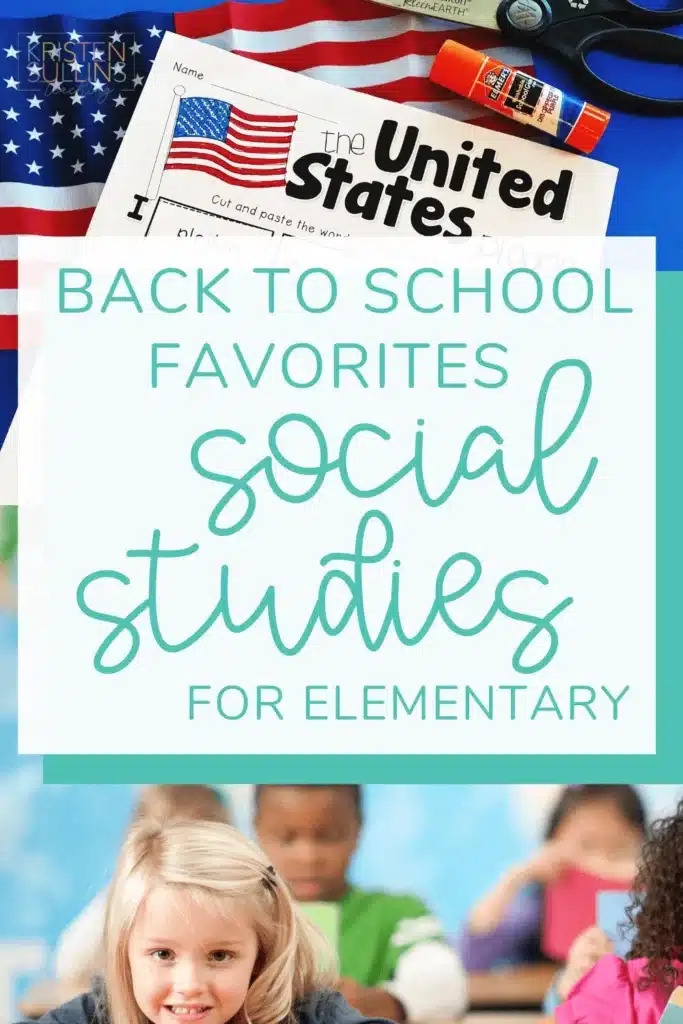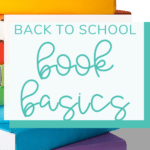Book activities have always been a “go-to” or essential back to school activity for any first grade teacher!
Lessons about books are an easy way to start the school year because it is something that first grade students are already familiar and comfortable with.
And I LOVE the engagement that book lessons and activities offer at the beginning of the year because you can choose some really FUN books and change it up every year without having to change your favorite back to school lesson!
Even more, what seems to be a simple back to school activity, can offer so many more benefits that you don't even realize!
Keep reading to find out how to teach your first grade students:
-the parts of a book
-how to take care of a book
-how to choose a “just right” book
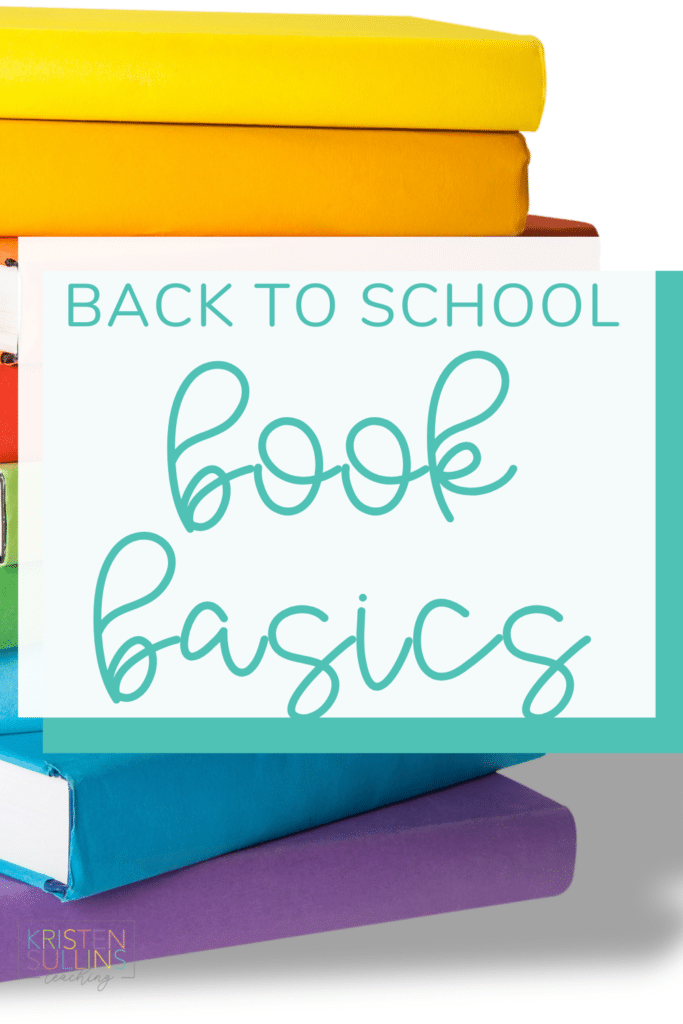
Why take time to teach first graders about books?
Although your students are in first grade, some may still not be super familiar or comfortable with books yet!
The ultimate goal is help ignite a love of reading in all your students that will make them life long learners!
But, students will never learn to love reading if they aren't comfortable with a book in their hand, they are confused by text features, if they don't know how important it is to take care of their books and the struggle to find a book that is “just right” for them.
Helping kids love reading is a rewarding endeavor that can have a lifelong impact on their learning and personal growth.
Remember that the key is to make reading an enjoyable and rewarding experience for children. By fostering a love for reading early on, you're helping them build a strong foundation for learning, creativity, and critical thinking throughout their lives.
How to Teach the Parts of a Book
Teaching first graders about the parts of a book can be an exciting and interactive learning experience. It's important to familiarize first graders with the parts of a book, including the cover, title page, table of contents, and more.
Begin by simply asking the students questions about books:
- “Who has read a book before?”
- “What do you know about books?”
Explain that books have different parts, just like our bodies have different parts. We will learn about the different parts of a book today.
Keep the language simple and age-appropriate for first graders. Utilize visual aids, storytelling, and interactive activities to make the lesson engaging and memorable.
It is also very helpful for students to have books in their hands so they can touch the different parts of the book as you are talking about them!
I always like to reinforce their learning about the different parts of a book with a cut and paste activity! (seen on the right)
We do this parts of a book cut and paste activity together, because it allows me a chance to walk them through “how” I want them to complete cut and paste activities, but it is also very helpful to it together for the students who may not be comfortable reading the words yet!
Bonus tip:
Encourage the students to share what they've learned with their parents or caregivers at home.
How to Take Care of a Book
Teaching kids to take care of a book is essential to instill a sense of responsibility and respect for their belongings, as well as to ensure the longevity of the books they read.
Here are some strategies to teach kids how to care for their books:
Lead by Example:
Show the children how you handle books with care and respect. Demonstrate the proper way to hold, turn pages, and store books.
Book Care Rules:
Establish simple and clear book care rules that are easy for kids to remember. For example:
- Always use clean hands
- Turn pages easily (to avoid tearing them)
- Use a bookmark (do not fold down corners)
- No food or drinks near your books
- Keep away from babies and pets (find a safe place)
- Do not write or draw in a book
Book Care Discussions:
Engage the children in discussions about why it is important to take care of books. Talk about how books are valuable resources and how taking care of them ensures that others can enjoy them too.
Book Care Activities:
Incorporate fun and interactive activities related to book care. For example:
- Have a “Book Hospital” corner where children can bring damaged books, and together, you can fix them using tape or other materials.
- Create bookmarks with the children and emphasize using them to keep their place in the book.
Book Sorting Game:
Organize a game where children sort books into two categories: “Well-Cared-For” and “Needs Care.” Discuss why each book belongs in its respective category and how to improve book care for those in the “Needs Care” group.
Book Care Posters:
Create colorful posters with simple book care reminders and display them in the classroom or library. Visual cues can help reinforce book care habits.
Book Care Pledge:
Have the children take a book care pledge, promising to treat books with respect and care. Display the pledge in a prominent place as a reminder.
Book Care Stories:
Read stories or books that emphasize the importance of taking care of books. Discuss the lessons learned from these stories and how they apply to the children's own book care practices.
Book Care Rewards:
Praise and reward children when they demonstrate excellent book care habits. Positive reinforcement can encourage them to continue caring for their books properly.
How to Choose a Book
Choosing the right book for kids involves considering their interests, reading level, and age-appropriateness. Here are some steps to help you choose a book that will captivate and engage young readers:
1. Understand Their Interests: Talk to the child about their hobbies, favorite activities, and topics they enjoy learning about. Knowing their interests will guide you towards books that align with their passions.
2. Consider Reading Level: Assess the child's reading ability and choose books that match their current level. Look for books with appropriate vocabulary, sentence length, and complexity. Many books are labeled with age or grade ranges to help you find suitable options.
3. Explore Different Genres: Introduce children to a variety of genres such as adventure, fantasy, mystery, science fiction, historical fiction, non-fiction, and more. This exposure can help them discover what they enjoy most.
When helping students choose a “just right book”, consider the five finger rule:
- Have a student open to any page in the book
- Have the student start reading the book and hold up one finger each time they come to a word they do not know
0-1 fingers = too easy
2-3 fingers = just right
4-5 fingers = too hard
Remember that each child is unique, and their tastes in books will vary. The key is to nurture a love for reading by providing them with enjoyable and age-appropriate books that cater to their individual preferences and reading abilities.
My Favorite Back to School Book Activities for First Grade
I created the following back to school book activities to use in my own first grade classroom!
❤️ BACK TO SCHOOL MADE EASY-
Because most of these activities are no or low prep, you can simply click, print and be ready for teaching your students about books.
Cover you “basics” with this back to school all-in-one download to teach your students about parts of book, book care and how to choose a book.
This unit includes book posters that are ready to print and hang, anchor chart pieces to help you build your own and easy-to-use printable that are ready to print and teach!

